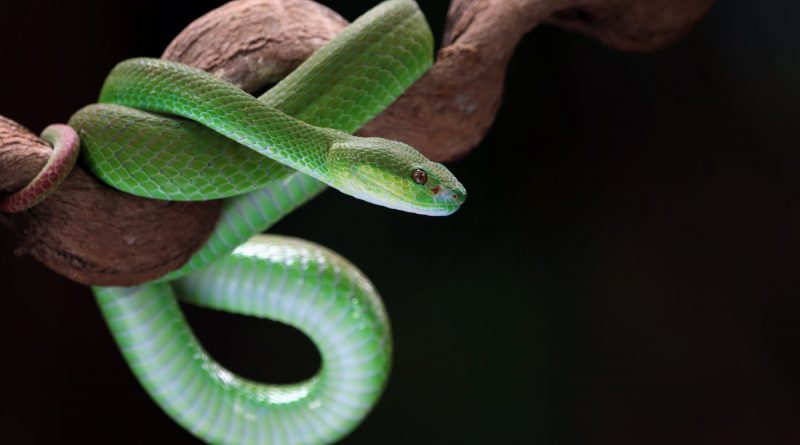Little And Sensible To Maintain Snakes As Pets For Newbies
People are often afraid of snakes for a variety of reasons. Some individuals fear snakes due to their lack of legs and ability to squeeze. Other individuals find these characteristics interesting. You may be interested in having a snake but have no idea where to begin.
Even if you appreciate snakes as pets, you do not want a difficult-to-care-for or large kind. Having a snake as a pet for the first time should not be frightening since many kinds make excellent pets. Because they only need to feed once every few days to once a month, snakes have numerous benefits over “regular” pets. Here is a list of little snakes that are also simple to care for.
What do beginning snakes need?
Dealing with a snake that refuses to feed may be difficult and requires a lot of skill to resolve. Most snakes that feed well are purchased when they are not too young, or if they consume frozen food, inquire with the vendor. This is true regardless of the species chosen. All snakes on this list can thrive in tanks of 30 gallons or less.
Venomous African Egg-Eater Snake
Even though these uncommon snakes are less prevalent than the others on our list, they are incredibly simple to care for and the only species that can be described as “vegetarian.” According to its name, African egg-eating snakes consume eggs exclusively. They do not consume whole animals since they only consume eggs.
The sole need is a reliable supply of extra-small, ideally fertilized quail or finch eggs. These eggs are available at Asian food shops, on the Internet, and sometimes through bird breeders. However, not all of these eggs are fertilized. Some fertilized tiny eggs sold by Reptilinks.com are already hatched and cannot be fed.
If you wish to utilize frozen eggs, place them in a dish of warm water and gently shake them until you hear the inner “sloshing.” Then feed them immediately. These little snakes make excellent pets if you can locate their food source. They lack front teeth and do not bite often.
Western Hognose
These snakes have unique appearances and behaviors due to their hefty bodies and upturned snout. These creatures are highly adept at bluffing when they feel threatened. As a final option, they hiss, flatten their bodies, and may even act dead.
However, snakes that grow in captivity often do not need such displays since they are not afraid of humans. Additionally, they seldom bite, and defensive hognose snakes strike with their lips closed.
As a kind of protection, these snakes may produce a pungent odor. These snakes are simple to care for and may live in a tiny, inexpensive enclosure (20-gallon tank or plastic bin), but they need additional illumination.
Mexican Milk Snake
Because they are attractive and simple to care for, milk snakes are among the most popular pets. While most milk snakes may reach around four feet, they have a relatively small perimeter and do not seem particularly large. This makes them an excellent compromise for those seeking a larger tiny snake.
Infantile Python
You ought to acquire this species. The Children’s python, which was called after a person and not because it is excellent for children, is simple to care for and breed, and it seldom exceeds 40 inches in length, which is rather little for a snake.
These little creatures can survive in a 15-gallon aquarium, whereas two snakes may be kept in a 20-gallon aquarium. In the environment, this species mostly consumes frogs and lizards. Thus it seems logical that juvenile individuals are fussy eaters. This is true for the vast majority of snakes. The vast majority of Children’s pythons will be fed frozen and thawed mice.
The Children’s python has a lot of similarities in appearance with a few other python species. The anthill python is the smallest snake in the world, about 24–30 inches long. Two other varieties are the spotted python and the large-blotched python. These two snakes need comparable care.
Kenyan Sand Boa
These little boas are adored by those who prefer a small-sized snake in both length and breadth. They are colorful and may survive in a tank of as little as 10 gallons or a similar-sized plastic container. Because these snakes prefer to burrow, an excessive amount of cage decorating might hinder their ability to do so.
Just be sure you provide them with the proper nutrients for growth. Most Kenyan sand boas are peaceful; however, a few might be timid. However, they seldom bite to defend themselves. Snakes can bite, but if they mistake your hand for food and you treat them properly, they will not bite.
Species of Cobra
King snakes come in a variety of sizes. The scarlet kingsnake is among the tiniest snakes that may be kept; however, it is not recommended for beginners. The most well-known king snake is the California kingsnake, which may grow up to three or four feet in length and has a slender body.
There is the stunning Mexican black king snake, which is around the same length, and the grey-banded king snake, which can reach lengths of up to three feet and is a good option. The name “kingsnake” refers to their ability to consume other snakes in the wild. These snakes are simple to care for and may be housed in 15–20 gallon tanks or similar-sized plastic containers. A snake can make a great pet for someone who has never owned one.

